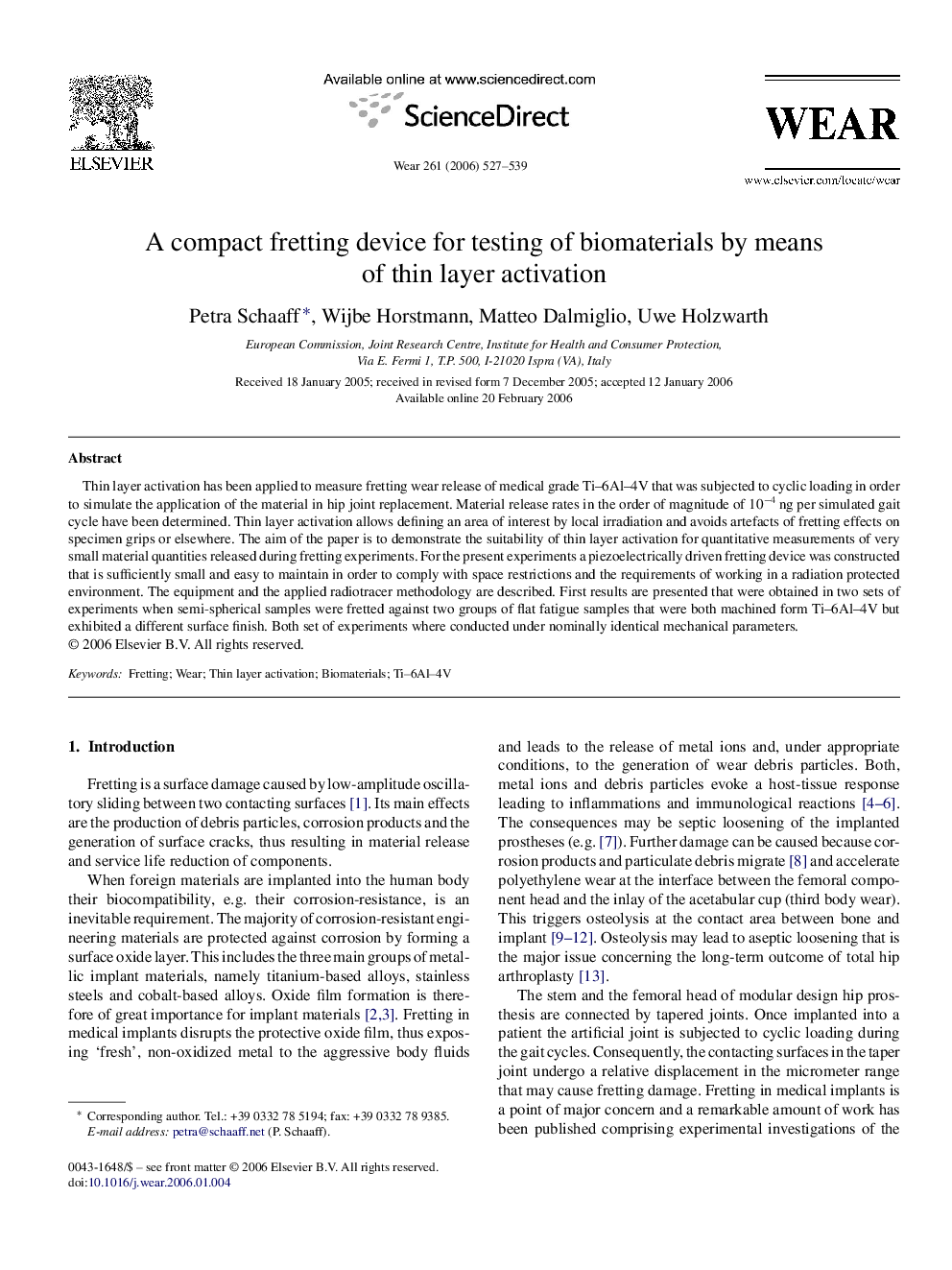| Article ID | Journal | Published Year | Pages | File Type |
|---|---|---|---|---|
| 620109 | Wear | 2006 | 13 Pages |
Thin layer activation has been applied to measure fretting wear release of medical grade Ti–6Al–4V that was subjected to cyclic loading in order to simulate the application of the material in hip joint replacement. Material release rates in the order of magnitude of 10−4 ng per simulated gait cycle have been determined. Thin layer activation allows defining an area of interest by local irradiation and avoids artefacts of fretting effects on specimen grips or elsewhere. The aim of the paper is to demonstrate the suitability of thin layer activation for quantitative measurements of very small material quantities released during fretting experiments. For the present experiments a piezoelectrically driven fretting device was constructed that is sufficiently small and easy to maintain in order to comply with space restrictions and the requirements of working in a radiation protected environment. The equipment and the applied radiotracer methodology are described. First results are presented that were obtained in two sets of experiments when semi-spherical samples were fretted against two groups of flat fatigue samples that were both machined form Ti–6Al–4V but exhibited a different surface finish. Both set of experiments where conducted under nominally identical mechanical parameters.
